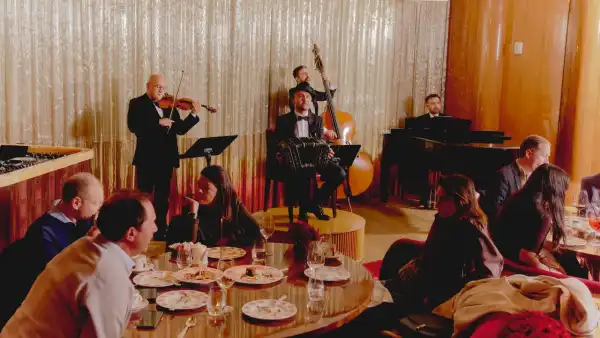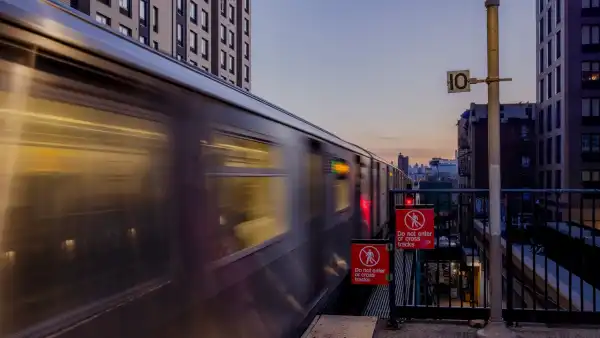
Save this storySave this storySave this storySave this storyYou’re exploring the Food Scene dispatch, Helen Rosner’s manual to what to consume, where to dine, and how to relish it. Subscribe to have it delivered to your inbox.
The chronicle of Francis Mallmann, the sixty-nine-year-old Argentinean master chef, unfurls like a virile fable. At forty, subsequent to obtaining substantial acclaim preparing food with the French method, he shunned the European gastronomy blueprint to champion fire and simplicity. Drawing from youth recollections and native South American approaches, he commenced cooking over (and underneath, and within) exposed blazes, erecting iron cupolas to dangle arrays of fowl and root veggies over simmering pyres, fastening entire cattle to metallic crucifixes for extensive, slow cooking. In 1995, at a presentation at the Académie Internationale de la Gastronomie in Frankfurt, Mallmann astounded the food world with a nine-segment meal crafted entirely from Andean spuds, which, given Germany’s stringent import regulations, he was compelled to sneak into the country. In a “Chef’s Table” segment that broadcast in 2015, Mallmann, then fifty-nine, sporting a shoulder-grazing mane of white tresses subdued by a pillowy beret, spoke thoughtfully regarding his bond with his chosen tool: “When you prepare food with flames, when you fashion a fire, it mirrors making love. It could be immense, potent. Or it might burn gradually into cinders and tiny embers.” When he isn’t gracing one of his nine, maybe ten eateries—largely in South America, one at Château La Coste in Provence, and yet another in Miami, courtesy of the Faena hotel—he resides on a secluded isle on an isolated Patagonian lake.
You can visit Mallmann’s haven, should you desire. Tourist arrangements encompass six nights on the isle and, among further enticements, five “Fire Dining Experiences,” commencing at above thirty-four thousand dollars for each person. Conversely, for a mere portion of that sum, you can now savor Mallmann’s cuisine here in New York, at La Boca, his recent establishment, housed in the novel Faena hotel, a sinuous modernist edifice on West Eighteenth Street. Like his Miami establishment, Los Fuegos, La Boca is abundant and layered, its interior a plush, amorous panorama of crimson velvet and roseate roses, the illumination muted and evocative, the artistry and dinnerware ornamented with auric accents. Dissimilar to Los Fuegos—or, truthfully, any of Mallmann’s other venues—La Boca lacks the radiance of an actual fire, either in the galley or within the dining area. This stems from an irksome local ordinance: New York City’s fire codes have, of late, outlawed the construction of open-flame hearths. Instead, the eatery has had to convert Mallmann’s respect for fire into a more mundane appreciation of garden-variety natural gas.
 Mallmann lives on a private island on a remote Patagonian lake.
Mallmann lives on a private island on a remote Patagonian lake.
Perhaps it’s the absence of heat: La Boca possesses beauty, and expense, and charisma, though it is also profoundly flawed. I dined there thrice, consistently amazed by the disconnect separating the appealing ambiance within the dining area, which showcases live melodies at supper and floods of sunlight during midday repasts, and the astounding blandness of the fare presented. Near enough every offering proved a letdown, at times unsettlingly so. Empanadas, a quintessential staple of Argentine gastronomy, surface stuffed either with uninspired, oily ground beef peppered with slick chunks of firm hard-boiled ovum, or with an oregano-laced Vermont cheddar that solidifies practically instantly into a waxy mass. A complimentary llajua sauce, identified by me as a fiery, chile-centric Bolivian salsa fresca, but seemingly comprised of grated tomatoes—solely grated tomatoes, meagerly salted—lifts their appeal somewhat.
If you desire a steak—an Argentine eatery, after all—the choices mirror Mallmann’s defining fixation with dimensions. Available is, for example, a thirty-two-ounce rib eye at two hundred and thirty-five dollars, alongside something termed the Tower, showcased by an attendant as a remarkable vertical configuration of beef-tenderloin portions interwoven with crunchy pulverized spuds. Upon emergence, it marked the letdown of the annum, the flesh tender and devoid of zest, the spuds scant enough as to verge on transparency, bearing the chewy sturdiness of a desiccated banana rind. And what a tower—three inches in altitude, wider than lofty, slumping somberly in a pool of peculiarly oleaginous jus. The menu’s centerpiece is the parrillada, a classic Argentine blended-grill platter, here offering a carnivorous quartet of lamb parts, branzino fillets, colossal shrimp, and a plump New York strip served upon the grates of a grand, urn-shaped tabletop grill (unlit, purely for visual impact). It’s a decent steak—an undeniably decent one. I stood surprised, and heartened, to at long last unearth something at La Boca that remained plainly unobjectionable, and thus began to chuckle, then nearly choked on my morsel of meat and ceased to breathe, though I cannot indict the eatery for such. That for which I may indict it resides in the fact that I had sought the meat medium rare—I’d engaged in a pleasant small discourse about it with our attendant, who happily revealed that that is likewise the chef’s inclination—yet it arrived medium well. The remainder of the parrillada proved acceptable: the lamb parts tender, the branzino crisp-skinned, the shrimp gargantuan. Despite their technically precise assembly, each item within the array remains severely under-seasoned, though the offering does arrive accompanied by a diminutive receptacle of chimichurri, unusually un-garlicky and un-salty, alongside two tiled lines of Mallmann’s famed “domino potatoes.”
 The menu’s centerpiece is the parrillada (right), a traditional Argentinean mixed-grill platter, featuring lamb chops, branzino fillets, prawns, and New York strip steak.
The menu’s centerpiece is the parrillada (right), a traditional Argentinean mixed-grill platter, featuring lamb chops, branzino fillets, prawns, and New York strip steak.
I have cooked such spuds prior, as it occurs—the recipe surfaces within Mallmann’s 2009 cookbook “Seven Fires,” which, trust me, remains a phenomenal tome, even if I have never attempted the recipe for cooking “una vaca entera.” The spuds’ peculiar form materializes from hewing the sides off each to yield a tight-angled rectangular block, then thinly slicing it and pressing down to fan the fragments outward akin to Ricky Jay deploying a deck of cards. The spuds are baked within oceans of clarified butter, until the surfaces glow golden, the corners of each slender slice growing crisp and curling, the interiors velvety. The rendition offered at La Boca—accessible also as a stand-alone accompaniment, garnished with a pouf of arugula—scarcely resembled the equivalent dish. The spud fragments sat thick and wan; as opposed to crisp, they adhered with their innate starch. Humitas, a further accompaniment that Mallmann is celebrated for—an Andean creation of fresh sweet maize leisurely cooked with milk—surfaces in a metallic ramekin, perhaps accounting for its tinny undertones of creamed maize directly liberated from the can. Does the great chef appreciate the ongoing happenings? Does it please him?
Per a lengthy elucidatory text upon the menu, La Boca strives to evoke a Buenos Aires neighborhood of the identical denomination, a vibrant, artistic locale distinguished by its merging of societal tiers and ethnicities, alongside a spirited eating scene. In pursuit of such, the menu incorporates a devoted pasta section, showcasing a spaghetti pomodoro—the noodles vibrant and toothsome, the luminous sauce overwhelmed by an acrid, over-verdant olive oil—and a preparation of potato gnocchi with sage and mushrooms that were, I dare suggest, not intended to be scorched black on their undersides. An offering entitled Francis’s Thick Milanesa (ahem) features a muscular veal steak that has been, for no discernible end, breaded and fried. Mallmann has consistently championed the magnificence of veggies (his most recent cookbook is “Green Fire”), thus the selection of entrées includes an entire head of cauliflower, tasting precisely as such. Each individual dish I sampled bore under-salting—a recurrent grievance, as it seems, due to my noticing, upon my concluding sojourn, that saltshakers had been positioned upon each setting. Squat diminutive silver sentinels contrasting with the chamber’s motif of gold, they mirrored hushed admissions of failure.
 The dining room is decked out with red velvet, pink roses, and shimmering gold.
The dining room is decked out with red velvet, pink roses, and shimmering gold.
Helen, Assist Me!
Dispatch your inquiries concerning dining, devouring, and food-related matters, and Helen may furnish a response within a subsequent dispatch.
I harbor no desire to revisit La Boca, and I cannot in decent conscience suggest that any others dine there. Yet the restaurant’s atmosphere possesses considerable wonder, particularly when the live ensemble escalates for its thrice-nightly tango-inspired presentations. Remaining there imparts a sense of placelessness, cocoonlike, akin to having slipped through some fold within the metropolis into a realm where temporal passage shifts differently, where one rests neither entirely within New York, nor completely within Buenos Aires, and assuredly far removed from a wild, smoke-kissed isle within distant Patagonia, but instead within a swaddled nowhere, beholding a sequin-gowned songstress croon “Bésame Mucho” over a piano and a double bass. The velvet shimmers. The roses remain real. The attendants radiate genuine charm, despite their fluster prompted by queries regarding the beef’s provenance (disappointingly, originating not from Argentina’s revered herds but from Texas) or, two instances out of three, neglecting to convey the bread. To reach this cocoon, one must initially navigate the Faena itself. The doormen, adorned in cream tuxedos and dapper white top hats, extend a greeting to the lobby, sheathed within an immense mural portraying numerous photorealistically nude women gesturing towards assorted eldritch items and ascending nebulae. The entrance to the restaurant rests directly beneath an exquisitely detailed upturned nipple. One evening, I noticed a Cybertruck parked out front, then yet another precisely across the avenue. I had never beheld two simultaneously prior. They loomed, shining dimly through the night: sizeable appliances originating from a future coveted by none—overpriced, aggressive, altogether irrelevant. ♦
Sourse: newyorker.com







